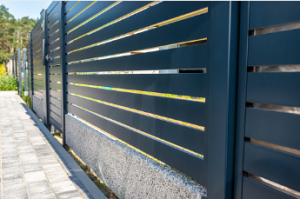Tips in Constructing a Fence
Before constructing a fence, you must check local ordinances and building codes. Make sure you know how far the fence must be from the property line. Make sure you stagger the rail joints on the different posts and not hard-staple the wire. Here are some helpful tips meant for fencing Seaford.
 Stagger the rail joints on different posts
Stagger the rail joints on different posts
You can stagger the rail joints on different posts to prevent warping or cupping. It will create a more even appearance on your fence and strengthen it. You can also stagger the length of the rails by using longer fence pieces. By staggering the length of the rails, you will be halfway through building your fence. The next step is to install fence boards.
When constructing a fence with staggered rails, mortice the posts after they have been screwed. It will prevent the rails from moving around during the installation process. In addition, if you are installing a fence with staggered rails, you’ll be able to install your fence faster and with fewer joints. So, what are the benefits of staggering rails?
Avoid hard-staple the wire
While installing welded wire fencing, ensure the mesh is taut and secure around the posts. Next, use twine or barbed wire to secure the corners temporarily. Then, use a 3-inch deck screw to secure the wire in place. Make sure you use two overlapping pieces of wire, alternating each one. Once you have secured the wire securely, you can use clippers to trim the excess.
In creating a secure fence, the posts should be long enough to support the entire height of the fence. To determine how long your posts need to be, measure the height of the top wire above the ground and add six inches. After that, cut the wire to fit. Then, place it on the posts. Repeat this process for each remaining post. Then, attach the other side of the wire to the post.
When building a fence, choose the best type of staples to use. Hot-dipped galvanized staples are ideal since they are made with barbs and cut points. Use shorter staples for hardwood posts, as they are easier to pull out. Also, choose wooden posts when installing a woven wire fence. In a cold climate, it’s important to dig below the frost line.
Checking local building codes and ordinances before constructing a fence
Before installing a fence, check the local building office and city website for regulations and requirements. Many cities require you to obtain a building permit or apply for one before constructing a fence. Once the permit has been obtained, the building inspector will inspect the fence and certify that it conforms to city codes. However, some fences do not require a permit, and as the property owner, it is your responsibility to ensure that your fence meets all regulations.
Choosing between wood and vinyl fences
The first factor to consider when deciding between wood and vinyl fences is the look you want for your property. The appearance of your fence is likely to attract a lot of attention from visitors, and wood is a highly classic look. Vinyl fences were previously only available in white, but manufacturers have expanded their colour choices to include a variety of vibrant shades. You should also consider the amount of use and whether the fence will receive.
Although wood was once the dominant material in fencing, newer and more advanced materials have taken the reigns. Newly introduced materials like vinyl have remarkable benefits and exceptional value for money. The introduction of vinyl into the market in the 1980s changed this dynamic. Vinyl fences are more durable, require virtually no maintenance, and resist the archenemies of wood: decay and pests. In comparison, wood fences are prone to rotting, causing a backyard to lose its natural charm.
Go to aldingahomeimprovements.com.au/fencing-seaford to learn some more about building a fence.


